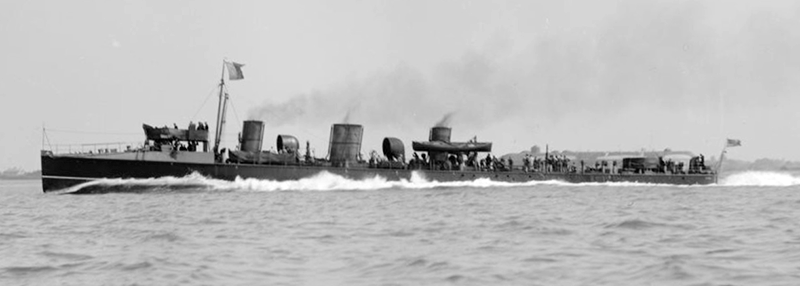
NAVYPEDIA
 Support the project with paypal
Support the project with paypal
Photo

Viper 1900
Ships
Name |
No |
Yard No | Builder |
Laid down |
Launched |
Comp |
Fate |
|---|---|---|---|---|---|---|---|
Viper |
366 | Hawthorn Leslie, Hebburn |
1898 |
6.9.1899 |
1900 |
stranded 3.8.1901 |
Technical data
| Displacement normal, t | 344 |
|---|---|
| Displacement full, t | |
| Length, m | 65.4 oa 64.0 pp |
| Breadth, m | 6.40 |
| Draught, m | 2.54 |
| No of shafts | 4 (twin screws) |
| Machinery | 4 Parsons steam turbines, 4 Yarrow boilers |
| Power, h. p. | 10000 |
| Max speed, kts | 33.7 |
| Fuel, t | coal 90 |
| Endurance, nm(kts) | 3000(10) |
| Armament | 1 x 1 - 76/40 12pdr 12cwt QF Mk I, 5 x 1 - 57/40 6pdr Hotchkiss Mk I, 2 x 1 - 450 TT (4) |
| Complement | 65 |
Graphics
Project history
The 33-knotters had been failures, but already by the time these were running their trials a new form of machinery had appeared which would prove the answer to higher speed requirements. In 1897 Parsons' Turbinia had made her spectacular appearance at the Jubilee Review at Spithead, and shown that the steam turbine was a workable device. In fact Director of Naval Construction had known about Parsons' trials for some time before, and had followed them with interest. It was not therefore surprising that a turbine-powered destroyer should be ordered from Parsons on 4.3.1898. Soon afterwards Armstrong began a turbine destroyer 'on spec' at their Elswick yard which would be taken over by the Admiralty before completion. Initial results with these vessels were encouraging, but both were lost almost immediately. Fortunately in neither case did the turbines have anything to do with the loss. To fill the need for further testing the Velox, building 'on spec', was purchased. All of these three turbine destroyers were 30-knotters in all respects including armament (except their machinery).
The hull of the Viper was subcontracted to Hawthorn Leslie by Parsons. To cope with the problems of absorbing the power from the turbines two propellers were fitted per shaft. The great boon of the turbine, its lack of vibration compared to reciprocating engines, became obvious during trials, as did its much greater ability to sustain high speed.
Modernizations
None.
Naval service
3.8.1901 Viper ran aground off Alderney. In some minutes her hull was broken apart and later was destroyed by waves. No personal losses.
 HOME
HOME FIGHTING SHIPS OF THE WORLD
FIGHTING SHIPS OF THE WORLD UNITED KINGDOM
UNITED KINGDOM TORPEDO SHIPS
TORPEDO SHIPS VIPER turbine destroyer (1, 1900)
VIPER turbine destroyer (1, 1900)
